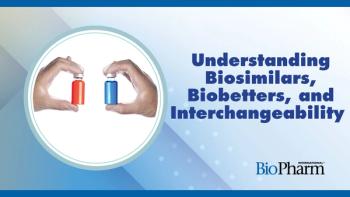
- BioPharm International's BP Elements, August 2022
- Volume 1
- Issue 8
Synthego Aims to Accelerate Drug Discovery with New Engineered Cell Libraries
Synthego has launched new engineered cell libraries to validate targets for quicker drug discovery timelines.
Synthego, a US-based genome engineering company, announced on Aug. 2, 2022 that it has launched engineered cell libraries that further enable access to clustered regularly interspaced short palindromic repeats (CRISPR). These libraries, based on Synthego’s Eclipse Platform, provide arrayed CRISPR-edited cells that can be directly used in functional screening assays.
The new offering is a high-throughput cell engineering platform that delivers cell-based models for disease research. The platform provides highly predictable CRISPR-engineered cells at scale via the integration of engineering, bioinformatics, and proprietary science and aims to enhance the speed, scalability, and efficiency of the drug discovery process by optimizing the path between experimental design and execution.
This platform, the newest addition to Synthego's engineered cells product line, offers a custom-arrayed library of multi-guide knockout cell pools (immortalized or induced pluripotent stem cells [iPSC]). These libraries are delivered ready-made to researchers and enable them to bypass the need for equipment and reagent sourcing, transfection, generation of an extensive CRISPR library, and hiring and training of staff. This advantage, in turn, allows researchers to overcome common hurdles associated with CRISPR-based target discovery and instead focus specifically on the science, according to Synthego in a company press release.
With engineered cell libraries, scientists can specify the human or mouse cell type (immortalized or iPSC available at launch) and gene targets they want to knockout to generate a custom “Knockout Cell Library.” The cells are then edited on Synthego’s Eclipse Platform, which handles guide design, cell line optimization, editing through transfection, and assessment of editing efficiencies. This results in cells that are ready to screen upon arrival.
Benefits of the engineered cell libraries on the Eclipse Platform include:
- Scalability and flexibility—engineered cell libraries allow researchers to maximize their screening power, which allows them to identify more targets earlier in the screening process.
- Predictability and transparency—Synthego’s multi-guide technology can achieve reliably high knockout efficiencies, which offers researchers confidence in their screening process.
- Cell engineering expertise and support—Synthego offers its expertise in automation innovation to provide greater consistency in outcomes and scalability.
Both the Eclipse Platform and the engineered cell libraries enable a wide range of applications in research and development across various disease areas and research disciplines, including oncology and neurology.
“Arrayed screening approaches are more sensitive, compatible with a broader assortment of downstream assays, and can yield data that is more readily interpretable than the more commonly used pooled approach but are underutilized due to lack of infrastructure and limited bandwidth,” said Travis Maures, chief technology officer, Synthego, in the release.
“We were able to quickly combine our proteomic expertise with Synthego's genome engineering capabilities in a matter of weeks,” said Nevan J. Krogan, director, Quantitative Biosciences Institute, University of California, San Francisco, in the release. “Normally, work such as this would take many years. We were able to quickly pinpoint which human genes are important for infection, and that allowed us to jump to which ones if we were able to drug them, could have a positive pharmacological effect on SARS-CoV-2 infection. That whole pipeline allowed us to identify several potential drug candidates, several of which we're still looking at.”
Source:
Articles in this issue
over 3 years ago
La Jolla Institute for Immunology Acquires Carterra LSA Platformover 3 years ago
Bio-Rad Expands Portfolio of Anti-Idiotypic Antibodiesover 3 years ago
Discovery Life Sciences Acquires AllCellsover 3 years ago
PerkinElmer Introduces New Cytometry Management Serviceover 3 years ago
Merck Digital Sciences Studio Supports Early-Stage StartupsNewsletter
Stay at the forefront of biopharmaceutical innovation—subscribe to BioPharm International for expert insights on drug development, manufacturing, compliance, and more.




